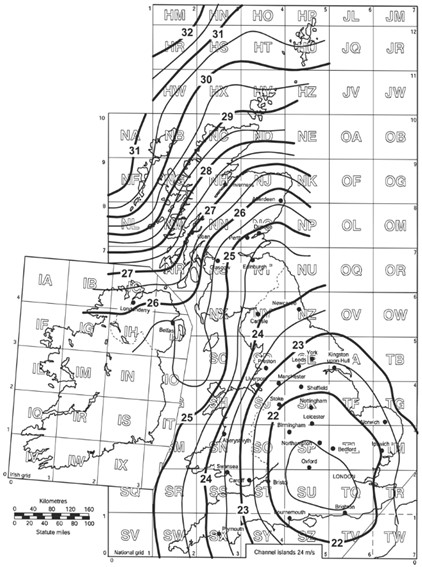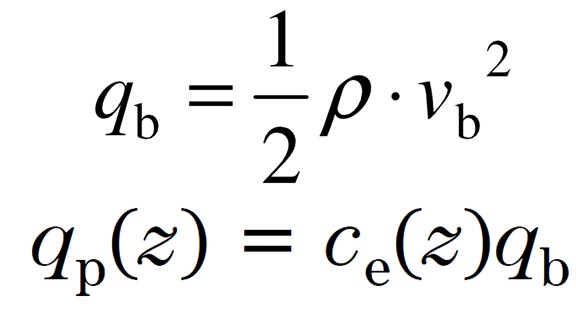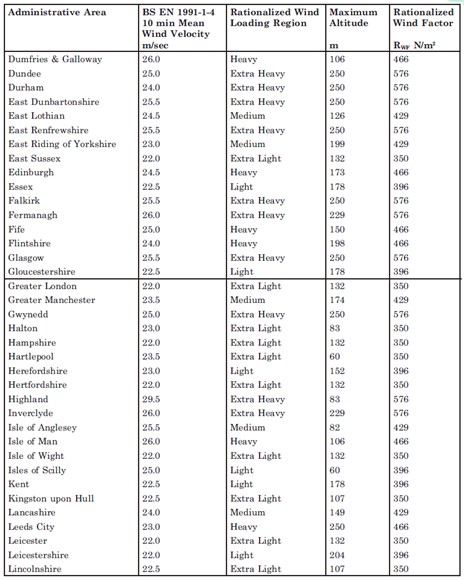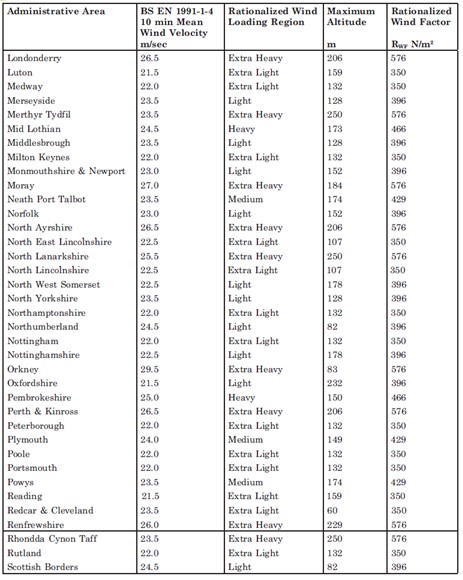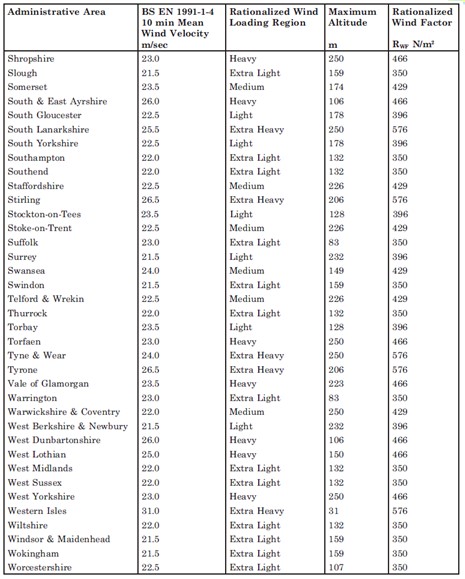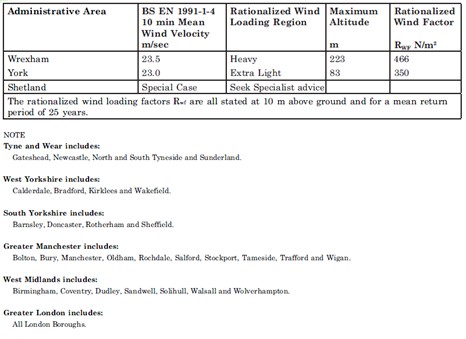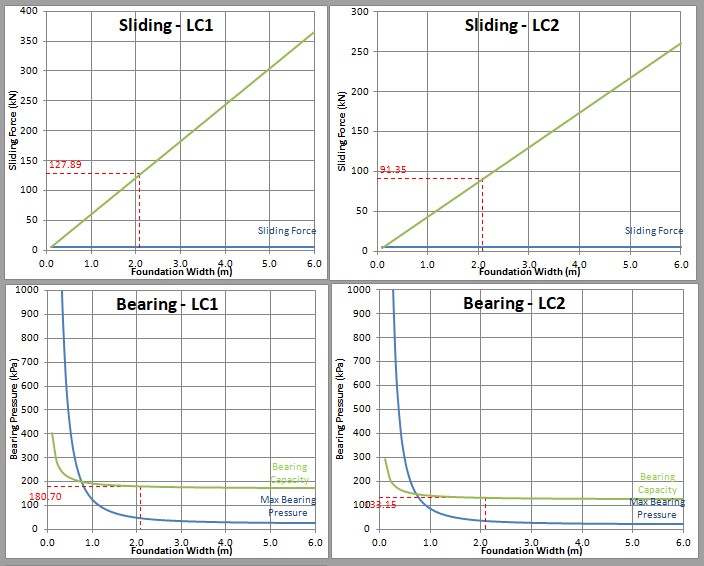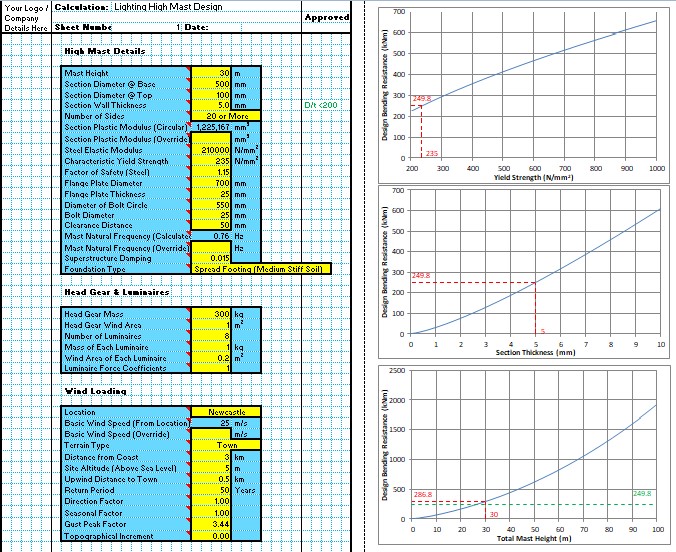Sign post wind loading design is usually the first step in sign post design. This should be done by calculating the wind actions according to BS EN 1991 but this can be a long winded process and often requires information that the designer may not have access to at an early design stage. For this reason a simpler alternative method has been developed and included in BS EN 12899-1 and the Sign Structures Guide. This involves the use of general values for the wind loading suitable for each constituent part of the UK. While simplified values such as these are always slightly conservative, they can lead to significant time savings for the designer which usually justifies their use in all but the largest and most complex of sign post design situations.
The CivilWeb Sign Post Foundation Design Calculator includes both the simplified wind loading analysis method and the full BS EN 1991 wind loading analysis method. Each method has its advantages, the simplified method requires much less detailed information, even the location can be generalised. However the full BS EN 1991 method is much more accurate and is likely to be much more economical simply because the simplifications involved in the simplified method make it conservative in nature.
Simplified Design - Wind Loading (wb)
In the simplified sign post wind loading design method the wind loading value is taken from the below table taken from BS EN 12899-1. These values are only applicable for altitudes less than 250m and incorporate a return period of 25 years.
These sign post wind loading values have been calculated using BS EN 1991 but are conservative. Note that areas such as the area south of Cape Wrath in Scotland, Cornwall west of Falmouth and Anglesey should be treated as within 5km of the shoreline when using this table.
The maximum sign post height of 7m is used as this will include almost all typical signs and any sign posts taller than 7m require additional design checks in the HA standards.
The maximum heights used in the table must also be adjusted if the centroid of the sign is higher than 0.75 x total height. In this case the max sign heights are 3.25m and 5.0m.
Force Coefficient, cf (Or Shape Factor)
The Force Coefficient cf is used to describe how the wind loading affects the sign depending on the shape of the sign. The aspect ratio or ratio between the height and width dimensions of the sign is used to determine the Force Coefficient using this table taken from BS EN 12899-1.
Total Wind Force (Fw,d)
The total wind force acting on the sign can then be calculated by multiplying the Force Coefficient (cf) with the Wind Loading (wb) and the Sign Area (Aref) which is simply the area of the sign.
This simplified equation removes some of the parameters such as the structure factor or orography factor from the more complex BS EN 1991-1-4 method as they are not considered significant for the design of general sign posts.
This value will then be multiplied by the Partial Action Factors (γf). These will typically be 1.35 for ULS bending and shear forces, and 1.0 for SLS deflection actions. This is recommended in BS EN 12899-1, PAF class 1. The additional factor γf3 can typically be taken as 1.0.
Wind Loading – Full BS EN 1991-1-4 Design
The simplified method of sign post wind loading design presented above will not always be suitable. In some cases it may be prudent to complete a single full analysis if this can then be used to cover an entire road or large area including many sign posts. The simplified method can be excessively conservative, particularly for large signs or for a large number of smaller signs. The more detailed calculations can lead to significant cost savings in these cases.
Fundamental Basic Wind Velocity (Vb,0)
The first parameter to calculate in the full BS EN 1991 sign post wind loading design is the Fundamental Basic Wind Velocity (Vb,0). This represents the characteristic mean wind velocity at 10m above ground level in open country with no significant obstructions. This fundamental value does not take account of the wind direction or the time of year. This value forms the basis of all the following calculations. The Fundamental Basic Wind Velocity can be determined from the Vb,map value taken from the wind speed map from BS EN 1991-1-4 NA shown below multiplied by the Altitude Factor (Calt).
The CivilWeb Sign Post Foundation Design Calculator includes default values for more than 150 major urban centres. However these values should only be used where the sign is located within the city, do not just choose the nearest city as the wind velocities can vary significantly even a few miles from the city centre. In these cases the default values should be overridden by the user with a value taken from the wind speed map provided within the spreadsheet and above. A full list of the default values are shown at the bottom of this page.
Altitude Factor (Calt)
The Altitude Factor (Calt) can be determined from the below equation suitable for signs less than 10m high, where A is the altitude of the site in metres above sea level.
Basic Wind Velocity (Vb)
The fundamental basic wind velocity value is then converted to the Basic Wind Velocity value by including the Cseason factor and Cdir values to account for the time of year and the direction of the wind.
The Cdir factor can be taken directly or interpolated from the below table. Note that signs are active in two directions, so the opposite wind direction must also be checked and the worst case applied.
The Cseason factor can be taken from the below table. This factor is only relevant temporary signs which will be up for less than 6 months. Generally this value can be taken as 1.0.
This result also needs to be adjusted to allow for different return periods. To do this the Basic Wind Velocity value calculated above must be multiplied by a Probability Factor (Cprob) to adjust the value for a return period other than 50 years. This is done using the below equation where K is the shape parameter equal to 0.2, n is the exponent equal to 0.5 and p is the probability of the event occurring in a given year (1 / return period).
Wind Pressure (qp(z))
The Basic Wind Velocity is then used to calculate the pressure which acts on the sign as a result of the wind load. In the UK the procedure for calculating this value differs slightly from the recommendations in BS EN 1991-1-4. The UK National Annex uses a chart (below) to determine the value of the Turbulence Intensity (Iv(z)flat) rather than using the equations provided in BS EN 1991-1-4. This is due to the fact that the equations assume an upwind fetch of around 200km of flat uniform terrain, and these conditions do not exist in the UK.
The simplest way to calculate the Wind Pressure is to calculate the Basic Wind Velocity Pressure (qb) and apply the correction factor Ce(z) which can be obtained from the distance to the shoreline and the sign centroid height using the below chart. This is then combined with the Basic Wind Velocity Pressure (qb) which is calculated using the below equation where ρ is the air density and vb is the Basic Wind Velocity. Note BS EN 1991-1-4 recommends an air density value of 1.25kg/m3. In the UK a value of 1.226kg/m3 has been used historically and is still recommended in the UK National Annex.
CivilWeb Sign Post Foundation Design Calculator
The CivilWeb Sign Post Foundation Design Calculator completes all the detailed wind loading analysis calculation in accordance with BS EN 1991. However for preliminary design cases where some of this information is unknown, the CivilWeb Sign Post Foundation Design Calculator also includes a simplified analysis tool which will complete the simplified wind loading analysis in accordance with BS EN 12889-1 and the Sign Structures Guide. The spreadsheet will also complete the sign post design and the foundation design for either embedded posts or pad foundations.
Get your copy of the CivilWeb Sign Post Foundation Design Calculator including detailed sign post wind loading design now for only £20.
Or why not bundle the CivilWeb Sign Post Foundation Design Calculator with our Street Light Foundation Design Spreadsheet for only £5 extra?
Download Free Trial Version
To try out a fully functional free trail version of this software, please Click Here or enter your email address below to sign up to our newsletter.
Error: Contact form not found.





